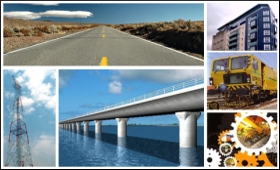|

|
For infra projects, need to attract both big and small investors
|
|

|
|
| Top Stories |
 |
|
|
|
Taponeel Mukherjee | 24 Mar, 2018
As large institutional investors with operational capacities plough
money into Indian infrastructure, it is important that we also keep an
eye on attracting the relatively small, non-operating investors as well.
Mobilising capital from a variety of sources will be important for
India to bridge the infrastructure gap.
Institutional entities
investing in infrastructure broadly fall into two categories: One, large
institutional investors with significant operational capacity and, two,
relatively smaller investors with available capital but not the
operational capacity or mandate.
For example, a large investor
might be willing to not just invest in a wind farm but also have the
capacity to run the business. A smaller player may be interested in
being a financial investor, but without the capacity or mandate to
operate the asset.
To attract both types of investors, the
government must create a policy and investment climate that is conducive
for infrastructure investments.
According to a global survey by
Preqin among institutional investors in the "Preqin Investor Outlook:
Alternative Assets H1 2017", the current and target allocations to
infrastructure for those surveyed was on average at 3.9 per cent and 5.2
per cent of assets under management, respectively. About 63 per cent of
investors surveyed were below their target allocation to
infrastructure.
Global institutions, it seems, are under-invested
in infrastructure, a clear opportunity for India to attract global
capital. The country needs to create a regulatory environment that can
attract a significant portion of the additional capital that will flow
into infrastructure, especially from the relatively smaller investors.
Another
interesting statistic: There has been a significant increase in direct
infrastructure investments (as a percentage of the total pool of
investable capital) by institutional investors over the last five years,
but the proportion of investors doing direct investments has decreased.
The
important takeaway is that though larger operating investors have
increased their investments, a significant number of smaller investors
have capital that they need to allocate through non-direct route which
does not involve an operating role with respect to managing the asset.
For operational or other reasons, these relatively smaller investors
prefer non-direct investments with direct investing being done by large
investors with significant in-house operational capacity.
In the
survey by Preqin, 62 percent of investors had assets less than $10
billion under management. It is imperative that policymakers look at how
this pool of capital can be mobilised and used to build infrastructure.
The
next question is: Just how big is the pool of capital available
globally beyond the very large investors? A ranking by Investment &
Pensions Europe (IPE) released in September-October 2017 and ranked the
largest global institutional investors in infrastructure threw up some
interesting statistics.
While the top 10 investors had
approximately $170 billion allocated to infrastructure, they had
approximately $3.9 trillion under management. The investors from the
20th to the 60th positions in the ranking had $95 billion allocated to
infrastructure while total assets under management was approximately
$3.8 trillion.
What this shows is the significant capital pool
that the relatively smaller investors have -- and the challenges that
exist in attracting that pool of capital due to fragmentation.
In
a global economy with asset price volatility and shrinking central bank
balance sheets, attracting global capital will be more challenging than
usual. India, given the size of its population, a young demographic and
obvious infrastructure investment opportunities, is an investment
destination on investors' minds, but we need to make sure that we build
on our strengths.
Large, operationally-savvy investors are
extremely important, but so are the non-operating financial investors. A
stable and efficient regulatory environment, along with efficient
investment vehicles, will be the key to attract more global capital for
Indian infrastructure.
|
|
|
| |
|
|
|
|
|
|
|
|
|
|
|
|
|
|
| |
| Customs Exchange Rates |
| Currency |
Import |
Export |
US Dollar
|
66.20
|
64.50 |
UK Pound
|
87.50
|
84.65 |
Euro
|
78.25
|
75.65 |
| Japanese
Yen |
58.85 |
56.85 |
| As on 13 Aug, 2022 |
|
|
| Daily Poll |
 |
 |
| PM Modi's recent US visit to redefine India-US bilateral relations |
|
|
|
|
|
| Commented Stories |
 |
|
|
|
|
|
| |
|